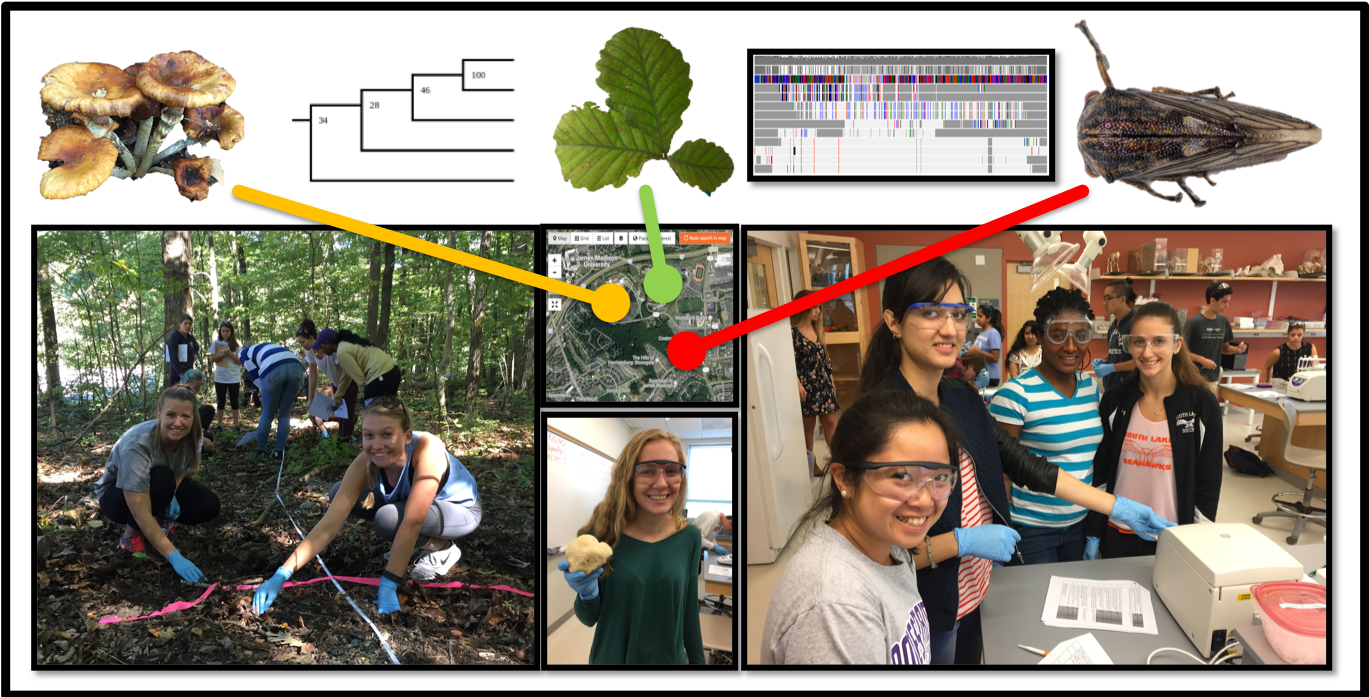
Growing calls in science education reform have emphasized wide-scale engagement of first-year undergraduate students in authentic research experiences; however, large course enrollments, inadequate student experience, limited resources and departmental inertia often create obstacles to reaching this goal. To help overcome these obstacles, the Department of Biology at James Madison University (JMU) has developed a cost-effective, scalable, and transferable semester-long (14-week) course-based undergraduate research experience (CURE) designed for large enrollment introductory biology labs. In this series of labs, first-year students use DNA barcoding to engage in authentic research practices drawn from the fields of ecology, molecular biology, and bioinformatics. These labs enable students to identify local species of plants, fungi, and invertebrates using student-generated DNA barcode sequences, which are then shared through a public database. Since their implementation at JMU in 2016, students in these labs have created and shared over 1,500 unique DNA barcode sequences and documented over 300 local species of plants, fungi, and invertebrates. These data are being used in an ongoing project comparing the biodiversity of forest edge versus forest interior habitats, but the labs are adaptable to almost any habitat or taxonomic group. In this article, we provide detailed descriptions of the content, logistics, and implementation of this 14-week series of labs. To our knowledge, this is among the largest-enrollment CUREs being offered to first-year undergraduates in the United States, and we hope that it can be useful to other institutions interested in documenting biodiversity and engaging introductory biology students in authentic research.